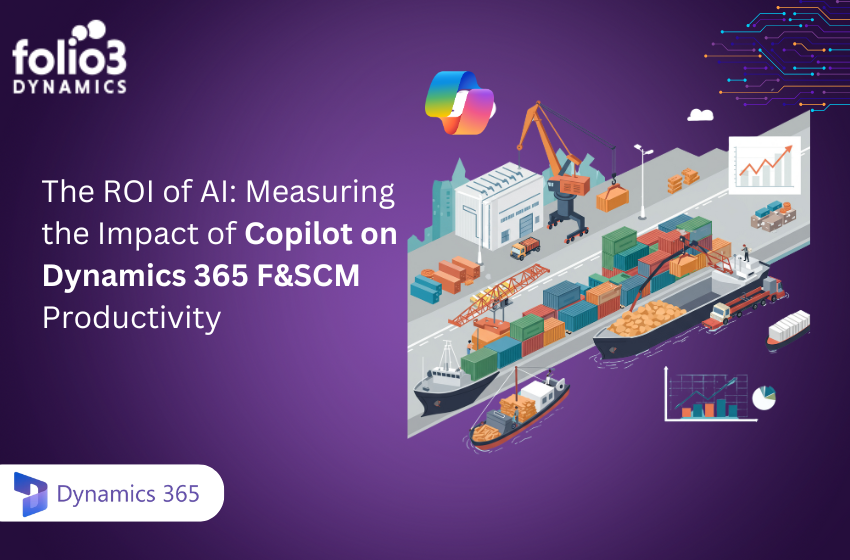Migrating from Sage to Dynamics 365 Business Central is a major step forward and completely regenerative for your business. With the ever-increasing, changing, and unpredictable needs of modern enterprises, adopting a strong ERP system that can grow along with your business is vital.
Whether you’re aiming to organize your operations or utilize modern technologies, migrating from Sage to Dynamics 365 Business Central can empower you with the necessary tools and functionalities to realize your business goals.
Dynamics 365 Business Central is a modern ERP solution that offers advanced functionalities, easy integration with other Microsoft products, and improved scalability. This comprehensive article covers everything you need to know about this migration, from planning to execution.
Benefits of Migrating to Dynamics 365 Business Central
The Sage to Dynamics 365 Business Central migration has a multitude of benefits; let us examine a few in detail.
1. Enhanced Functionality and Features
Dynamics 365 Business Central is an all-encompassing ERP solution that provides more than just accounting capabilities. It is equipped with modules for project management, inventory control, customer relationship management (CRM), and many more.
This all-in-one solution rids the need for multiple separate systems, providing a single platform for performing all business operations. The Sage to Dynamics 365 Business Central migration facilitates advanced functionalities, such as automated workflows, AI-driven insights, and predictive analytics that are not available in older Sage systems. These features aid you in refining your business processes and improving overall efficiency.
2. Integration with Other Microsoft Products
One of the most eminent benefits of Business Central is its easy and smooth integration with other Microsoft products. This integration enables real-time collaboration and data sharing across different platforms.
For example, you can use Microsoft Teams to facilitate communication between departments or use Power Automate to automate repetitive tasks. The Business Central migration process is further simplified with these integrations, allowing an enhanced, connected, and simplified workflow.
Moreover, the integration with Power Apps empowers businesses to create custom applications personalized to cater to their unique needs, further boosting the system’s flexibility and usability.
3. Improved Scalability and Flexibility
As businesses grow and flourish, so does the need for a highly scalable ERP system that can scale accordingly. Dynamics 365 Business Central is built on a cloud-based platform, thus providing the flexibility to scale up or down in accordance with your business needs.
This is highly beneficial for businesses experiencing swift growth or seasonal fluctuations. Unlike Sage, which may require costly upgrades or additional functionalities, Business Central can be easily customized and scaled.
This ERP migration strategy guarantees that your business can respond and adapt to market changes without the need for frequent software changes or costly investments.
4. Better Data Insights and Reporting Capabilities
The advanced data analytics and reporting features of Dynamics 365 Business Central are among the most prominent advantages supporting migrating from Sage to Dynamics 365 Business Central.
The system’s embedded AI and machine learning algorithms enable it to recognize patterns and provide predictive insights that might not be immediately obvious. Because Sage systems often do not offer this high degree of analytics, Business Central is a more powerful tool for decision-making.
The Dynamics 365 Business Central setup includes features like real-time dashboards, customizable reports, and data visualization tools, all of which help in making intelligent decisions quickly and efficiently.
Planning the Migration
It is always recommended that you plan meticulously before making any shift to new software. The Business Central migration process must also be thoroughly planned before migration.
Assessing the Current Sage Setup
Before stepping into the migration journey, it’s mandatory to carefully assess your current Sage setup. This consists of reviewing existing data, workflows, and systems to spot areas that need improvement.
This step is essential for developing a deep understanding of the scope of the migration and planning accordingly. It also helps identify any possible Sage ERP migration challenges that may come up during the transition, such as data inconsistencies or outdated processes.
Setting Migration Objectives
Setting clear and achievable migration objectives is an important step in the planning process. These goals must be in line with your company’s aims and target certain issues that you wish to fix with the new system.
For example, you may want to refine reporting capabilities, decrease the amount of data entered manually, or improve data accuracy. In addition to providing direction for the migration process, well-defined goals also act as standards for gauging performance after migration.
Formulating a Migration Strategy
Choosing the right migration strategy, whether a big bang or phased migration, is the lifeline for a smooth transition. A big bang approach consists of moving all data and systems simultaneously, while a phased approach migrates different modules or business units step by step.
Each method has its pros and cons, and the choice depends on your business’s complexity, risk tolerance, and available resources. A well-planned Sage to Dynamics 365 Business Central upgrade reduces downtime and ensures that all business functions are executed smoothly, even during the transition.
Establishing a Timeline and Budget
A detailed timeline and budget are needed to manage the migration process efficiently. The timeline should consist of key milestones, such as data export, testing, and go-live dates. A budget must also be allocated for all aspects of the migration, including software licenses, consulting fees, and potential downtime. Having a well-defined timeline and cost analysis helps keep the project on track and avoid unexpected costs.
Data Preparation and Cleanup
Your ERP migration strategy must include an adequate Data preparation and Cleanup plan to ensure data compatibility and smooth data migration. It consists of the following critical steps.
Exporting Data from Sage
Exporting data from Sage requires a well-thought-out process of identifying and categorizing various data types and formats. It’s important to ensure that all relevant data, from financial records to customer information, is included.
Data migration from Sage can be a complex task, requiring specialized tools and expertise to guarantee data integrity. Proper data export is the base of a successful migration, as it ensures that all critical information is transferred accurately.
Cleaning and Validating Data
Ensuring data cleanliness is mandatory while migrating. This includes finding and fixing duplications, inconsistencies, and inaccuracies in your data. Data validation guarantees that the data matches the criteria of the new system and is prepared for migration.
In addition to improving the new system’s efficiency, clean data ensures that all business operations continue without interruptions after the transfer. One cannot emphasize how important this step is, as it directly affects the efficiency and effectiveness of the Business Central customization and setup.
Mapping Data Fields to Dynamics 365 Business Central
Mapping data fields is a critical and sensitive step that involves matching your current data with the fields and formats in Dynamics 365 Business Central. This ensures that all information is accurately transferred and easily accessible in the new system.
Proper data mapping is mandatory for preserving data integrity and continuity. It also aids in a smoother transition by ensuring that all business-related information is readily available in the new system without any loss or corruption.
Migration Tools and Methods
There are specific data migration tools and methods that help accomplish smooth data migration.
Overview of Available Tools for Migration
A variety of tools are available for migrating data from Sage to Dynamics 365 Business Central. Microsoft’s Data Migration Wizard is a well-known choice owing to its ease of use and integration features.
However, third-party solutions may offer additional features and further flexibility, depending on your business’s needs. The choice of tools should be based on your data’s complexity and volume and the unique requirements of your migration project.
Step-by-Step Guide to Using Selected Tools
Once you have selected the appropriate tools, the next step is setting up and configuring them for the migration process. This usually involves mapping data fields, setting up data validation rules, and running test migrations.
A detailed step-by-step guide is needed to ensure that all team members are on the same page and aware of their roles and responsibilities during the migration process. Proper setup and configuration also help minimize possible issues and ensure a smooth shift.
Testing the Migration Process
Testing is a pivotal phase in the migration process. It involves running test migrations to identify potential issues and resolve them before the actual migration takes place. This step helps in validating the accuracy and completeness of the migrated data. It also allows you to train your team and acquaint them with the new system. Successful testing builds confidence and ensures a smooth go-live process, reducing any downtime in your business operations.
Conclusion
Migrating from Sage to Dynamics 365 Business Central is an impactful and long-term move toward modernizing your business operations. The benefits gained from enhanced functionality and better data insights to better scalability make this migration a valuable investment.
You can guarantee a smooth and successful transition by meticulously planning the migration, preparing your data, and selecting the best tools.
For more detailed information and professional assistance, visit Dynamics 365 Business Central Partner. They offer excellent services and support to help you reap the maximum benefits of Dynamics 365 Business Central and realize your business goals.


